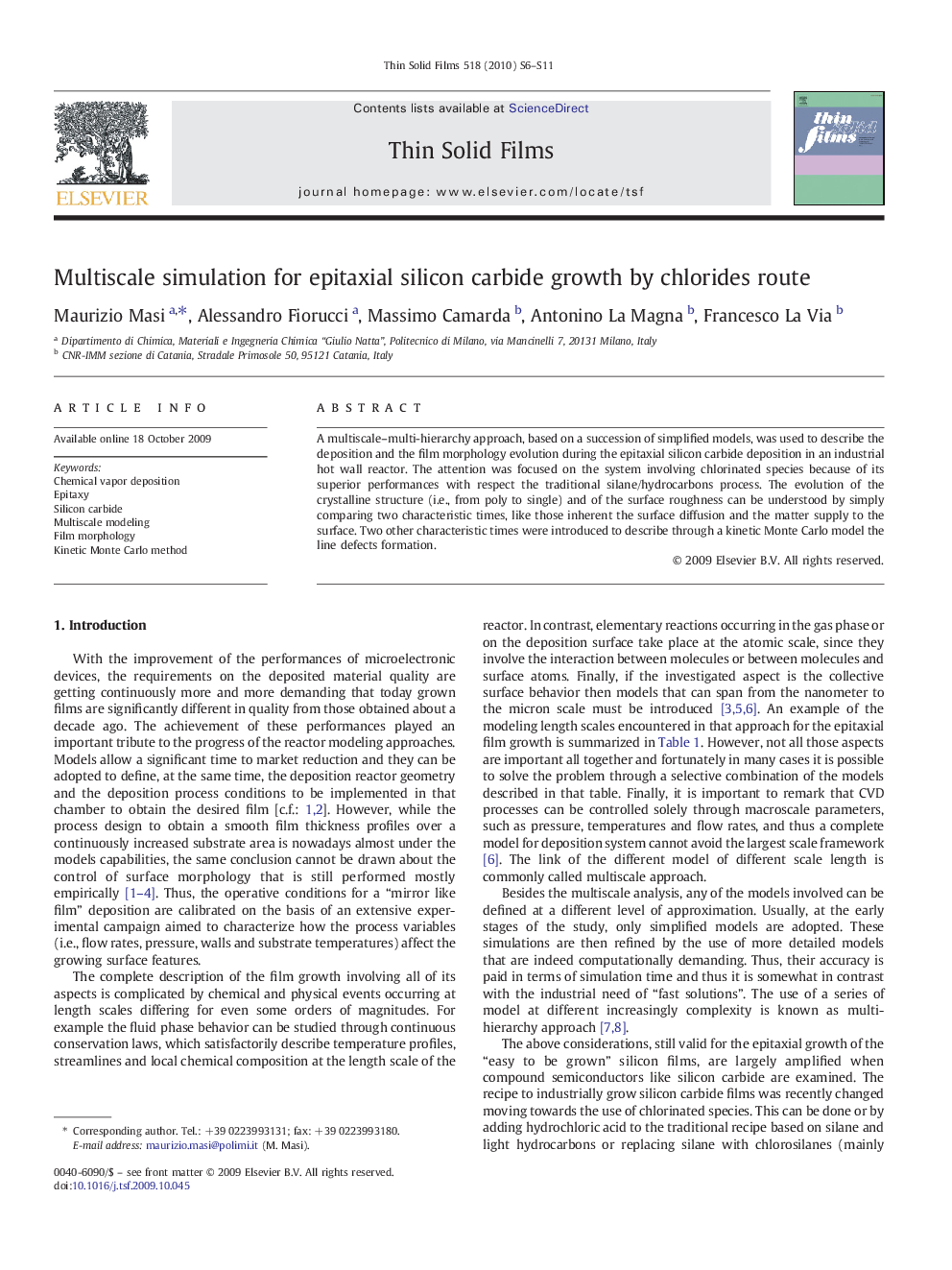| Article ID | Journal | Published Year | Pages | File Type |
|---|---|---|---|---|
| 1670207 | Thin Solid Films | 2010 | 6 Pages |
A multiscale–multi-hierarchy approach, based on a succession of simplified models, was used to describe the deposition and the film morphology evolution during the epitaxial silicon carbide deposition in an industrial hot wall reactor. The attention was focused on the system involving chlorinated species because of its superior performances with respect the traditional silane/hydrocarbons process. The evolution of the crystalline structure (i.e., from poly to single) and of the surface roughness can be understood by simply comparing two characteristic times, like those inherent the surface diffusion and the matter supply to the surface. Two other characteristic times were introduced to describe through a kinetic Monte Carlo model the line defects formation.
